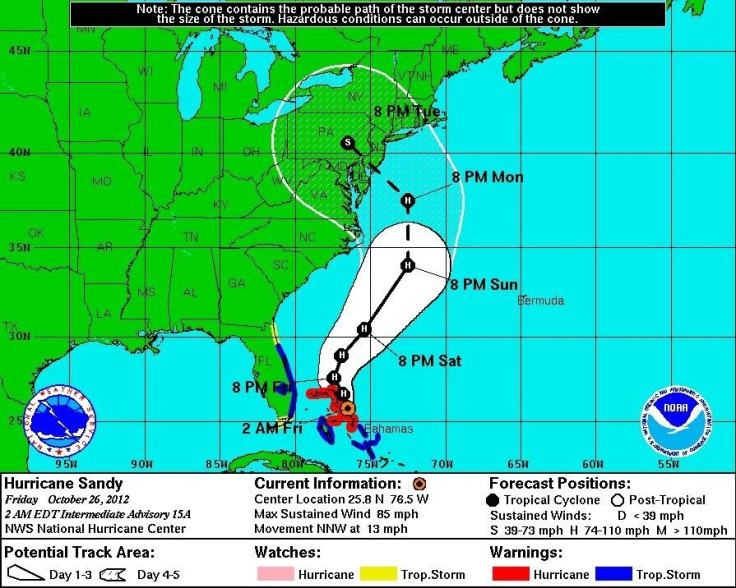
A number of states will be bearing the full brunt of Hurricane Sandy, a.k.a. Frankenstorm, in time for one of the stormiest Halloween weekends in recent history.
Passing through the Bahamas yesterday after destroying a number of islands in the Caribbean, the storm had already claimed the lives of 21 victims. As Hurricane Sandy makes its way north, approximately 50 million Americans living along the eastern coastline are anticipating a weekend storm extending to Tuesday. According to meteorologists, the Frankenstorm will spell an unforgiving combination of 60 mph winds, pounding rain, and possibly even snow, as it makes its way up to New England.
While Frankenstorm Sandy is a force to be reckoned with, nothing should stop a hardened New Yorker from getting into work. After all, get money, get paid.
To make sure our readers have no trouble getting around during the Frankenstorm, here are five quick ways to prepare your mean of transportation for the worst.
5. Get Your Car Inspected
According to storm chaser Matt Ver Steeg, the biggest enemy against any storm chasing endeavor would be a mechanical failure. The list of things that could go wrong in a car include the radiator, cooling fan, fuel pump, serpentine belt, flat tire, transfer case, and transmission.
While regular tune ups are always advised, its doubly important when you're up against the worst mother nature has to offer. Take your vehicle to your go-to mechanic and ask him to run a checklist over your tires, belts, hoses, radiator, water pump, battery, alternator, and fuel system. You may also consider having your transmission serviced as well.
4. Rain Tires
If you could only spare one single modification on your vehicle before the storm, the most important piece of hardware is undoubtedly your tires, the four contact patches that keep you and your car on the road.
The Goodyear Assurance TripleTred All-Season is the company's premium Passenger All-Season tire for everything from coupes to minivans. Hydroplaning might as well spell death as a driver will no longer have any control over his of her vehicle. Thankfully, the TripleTred All-Season, as the name implies, features three unique treadzones that properly disperses water and allows for year-round drivability and traction, even in snow. What's more, the Goodyear tire also features a unique tread compound made of polymers mixed with volcanic sand and glass fibers for optimal traction over virtually any surface and prolongs the life of the tire.
3. Waterproofing an engine
Forget about hydroplaning, a storm could easily bring water a couple feet high. In order to protect your car, make sure that the fuel tank is properly sealed so that water will not mix in with the oil. Any. Electrical devices including ECUs, instruments, electrical motors, lights, and batteries must be sealed to prevent circuitry from shorting out.
Finally, any chamber or crevise must have a drain to avoid still water and corrosion.
2. Car Snorkel
Waterproofing may not be enough. Internal combustion engines require air to enter cylinders in order for its engine cycle to work. However, if water enters into the air intake, water damage could seize the engine and leave you stranded as your city streets turn into rivers.
A Military Humvee can ford across 5 feet rivers, no problem. Standard passenger cars, on the other hand, cannot. Or can they? Humvees come fitted with a snorkel that rises over the A-pillar so that the only way for the engine to cut out is when the Humvee is completely submerged. While a hideous black plastic pipe serpenting over the A-pillar of your Audi TT may not be particularly appealing, it'll surely add a lot of peace of mind.
1. Emergency Kit
This should go without saying. All it takes is the smallest part to fail and even the most thorough military truck can find itself stranded in severe weather conditions. To prepare yourself from the worst case scenario, be sure to carry an emergency kit in your car. Essentials include a first aid kit, tire sealant, jumper cables, and a small tool box. You can also add a costco pack of water bottles and a number of nonperishable foods for safe measure.




